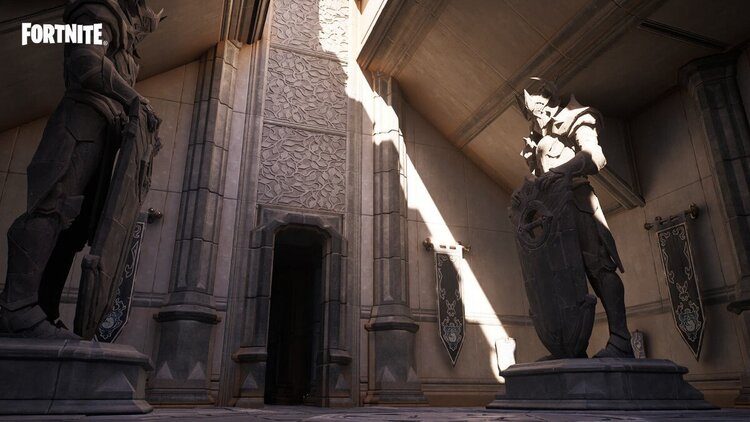Fortnite Chapter 4 has arrived with a brand new map, and a bunch of other bells and whistles in the newly updated engine. Epic has rolled in a bunch of graphical and technical improvements with their implementation of Unreal Engine 5.1, and it’s a huge update. The inflow of new graphical options allows for the game to look better than it ever has.
Two of the biggest additions are called Lumen and Nanite. Both of these elements are built into the engine to handle a variety of high-end graphical calculations and rendering. Let’s talk about what Epic has revealed about these new options, and what they entail. Unreal Engine 5 is a huge step up in terms of fidelity and post-processing effects for the game. There’s actually four big components here worth mentioning. Here’s a breakdown of each new feature in the UE5 update:
- Lumen – Advanced lighting tech for ray traced reflections.
- Nanite – Tracking and rendering of millions of polygons per frame.
- Virtual Shadow Maps – Every model in the game will now have individual shadows as part of its baked-in lighting options.
- Temporal Super Resolution – Temporal Anti-Aliasing that’s designed to improve texture and render resolution on extreme resolution scales.
Nanite is the streaming tech that allows UE5 to handle the rendering of effects and models at a polygonal level. The change allows the game to more accurately track and render every single part of a model or structure, down to the individual brick or other material. This means that Fortnite Chapter 4 is effectively handling the rendering of millions of polygons in a given frame. According to Epic, a single tree has 300,000 nanite polygons.
Lumen can be found within the “Global Illumination” and “Reflections” settings as the High and Epic options. This is the game’s approach to ray tracing, offering much more advanced lighting tech. Lumen ray tracing isn’t as visually impressive as singleplayer game versions, but it’s still a huge upswing in quality. The reason for a much less intensive process for improved lighting is due to the competitive nature of Fortnite. What it does mean is that lighting effects for models on the outer maps will be much more interesting and varied. This also opens up better lighting for interior spaces with more detailed interactions.
Another change brings something new to the table from Epic. Epic decided to fully remove Nvidia DLSS in favor of showing off its new competing resolution upscaling technology. Their approach allows them to tailor their tech to Fortnite and their own internally developed games—allowing much better turnaround time on development, as well as improved quality of the final updates in terms of bugs.
Instead of going with AMD or NVIDIA-specific solutions, they’re working with Temporal Super Resolution, allowing for similar effects to their competitors, but also greater degrees of control. TSR, their option, works in the place of anti-aliasing, so you have to toggle it from the options after installing the latest update.
Players tinkering with their settings is encouraged, as you have a more granular form of control compared to the likes of DLSS or FSR for finding your ideal sweet spot.
And it’s not just about the top-end of visual effects either. There are additional things you can check out as you play, like new destruction effects and things like evolved fire effects.
The products below are affiliate links, we get a commission for any purchases made. If you want to help support ISKMogul at no additional cost, we really appreciate it.
- amazon prime gaming
- axie infinity
- Casino Games
- coin genius
- EA Sports
- Epic
- Evil Geniuses
- Fortnite
- Fortnite Chapter 4
- Gaming
- gaming headset
- gaming pc
- General Gaming News
- Iskamogul
- madden nfl
- Nintendo
- Online casino games
- pc games
- plato
- plato ai
- plato data intelligence
- plato game
- plato gaming
- platodata
- platogaming
- playstation
- prime gaming
- Team SoloMid
- unreal engine
- Unreal Engine 5
- xbox
- zephyrnet









